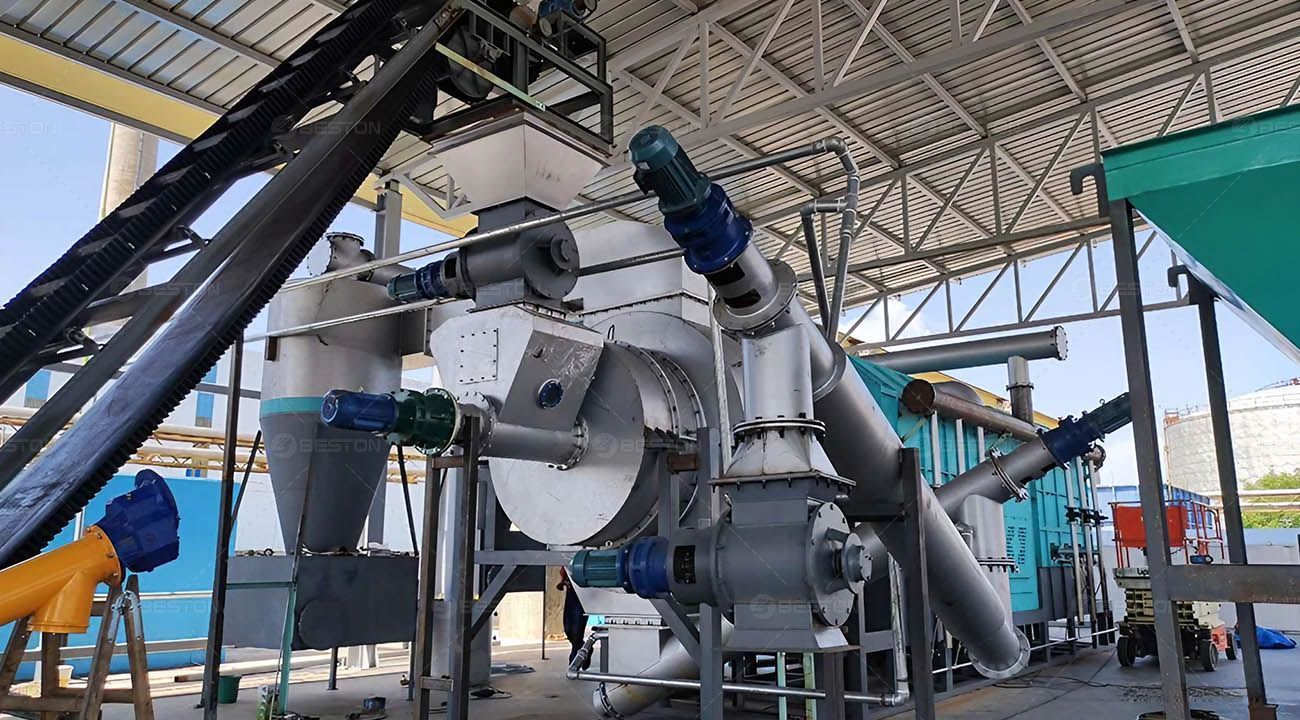Key Differences Between Wood Pyrolysis and Nutshell Pyrolysis

Pyrolysis is a thermochemical process that decomposes organic materials in the absence of oxygen. It is an efficient method for converting biomass into valuable products, such as bio-oil, syngas, and biochar. The feedstock used in pyrolysis greatly influences the final product's quality and the overall efficiency of the process. Wood and nutshells are two common biomass feedstocks used in pyrolysis. However, despite their similarities as organic materials, the pyrolysis of wood and nutshells involves different processes, outcomes, and considerations. Understanding these differences is crucial when choosing the appropriate biomass pyrolysis plant for specific needs.
1. Composition of the Feedstock
The first and most significant difference between wood and nutshell pyrolysis lies in the composition of the feedstocks themselves. Wood consists primarily of cellulose, hemicellulose, and lignin, which are complex organic polymers that offer substantial carbon content. Cellulose and hemicellulose, in particular, are responsible for the biomass's energy potential and their conversion during pyrolysis.
Nutshells, on the other hand, are composed of cellulose, lignin, and a relatively higher proportion of lipids and proteins, depending on the type of nut. While cellulose and lignin also dominate in nutshells, the higher content of oil and fat influences the pyrolysis process. This difference in chemical composition leads to distinct variations in the final products.
2. Pyrolysis Temperature and Time
Pyrolysis of wood generally requires temperatures ranging from 400°C to 600°C. At these temperatures, the cellulose and hemicellulose degrade efficiently, producing bio-oil, syngas, and biochar. Wood pyrolysis tends to have a relatively longer residence time in the reactor because of the dense nature of the wood fibers and the complexity of lignin degradation.
Nutshell pyrolysis, by contrast, is typically conducted at slightly lower temperatures, often in the range of 350°C to 550°C. The higher fat content in nutshells makes them more thermally responsive, which can lead to faster decomposition compared to wood. This difference in the optimal pyrolysis temperature results in faster production times for nutshells, potentially increasing the throughput of the biomass pyrolysis plant when using nutshell feedstock.
3. Yield and Composition of By-products
The pyrolysis of both wood and nutshells yields bio-oil, syngas, and biochar; however, the composition of these products differs due to the distinct chemical makeup of the feedstocks.
- Bio-oil: Wood pyrolysis typically produces a higher percentage of bio-oil due to its cellulose and hemicellulose content. Bio-oil from wood is often rich in oxygenated compounds, making it a suitable precursor for further refining into liquid fuels. In comparison, bio-oil derived from nutshells has a higher content of fatty acids and hydrocarbons because of the lipid content, which results in a more complex bio-oil composition that can be more difficult to refine.
- Syngas: Both wood and nutshell pyrolysis produce syngas, which consists primarily of methane, carbon monoxide, and hydrogen. However, the syngas produced from nutshells often has a slightly higher calorific value due to the presence of fats, which contribute more energy when decomposed compared to the cellulose and lignin in wood. This makes nutshell pyrolysis a more energy-efficient process in terms of syngas production, which can be utilized to power the pyrolysis plant itself.
- Biochar: The biochar yield from wood pyrolysis is typically higher than that from nutshell pyrolysis. Wood’s dense fiber structure results in a more substantial amount of carbonized material. Nutshells, being smaller and oilier, yield slightly less biochar, but the biochar produced from nutshells may have higher energy content due to the higher carbon content of the nutshell material itself.
4. Energy Efficiency and Environmental Impact
Energy efficiency in pyrolysis is crucial for maximizing the overall profitability of a biomass pyrolysis plant. Wood, being a more fibrous material, generally requires more energy to heat and break down compared to nutshells, which are more easily thermally decomposed due to their higher fat content. Therefore, the pyrolysis of nutshells tends to be slightly more energy-efficient, reducing the overall consumption of external energy sources.
In terms of environmental impact, both feedstocks offer ecological benefits by reducing waste. However, nutshell pyrolysis can produce fewer particulates and volatile organic compounds (VOCs) compared to wood pyrolysis. The fats and oils in nutshells combust more cleanly, which can help reduce the environmental footprint of the process. Wood, on the other hand, may require additional filtration systems to manage smoke and particulate matter effectively, increasing both operational complexity and costs.
5. Cost Considerations
The cost of operating a biomass pyrolysis plant varies depending on the type of feedstock used. Wood is widely available and relatively inexpensive, but its higher density and the need for more extended processing times can increase operational costs. Nutshells, while potentially more expensive as a feedstock depending on the region and availability, offer faster processing times, which can improve plant throughput. The higher oil yield from nutshells also provides an opportunity for higher revenue from bio-oil sales, offsetting the increased feedstock cost.
6. Market Applications
The end products of both wood and nutshell pyrolysis have diverse applications in various industries. Wood-derived biochar is commonly used in soil enhancement and carbon sequestration, while nutshell biochar may be more suitable for specific agricultural applications, where the higher energy content of the biochar is beneficial for soil fertility. Bio-oil from wood is more commonly refined into biofuels, whereas the bio-oil from nutshells, due to its higher fatty acid content, is more suited for use in industrial applications or as a feedstock for biodiesel production.



